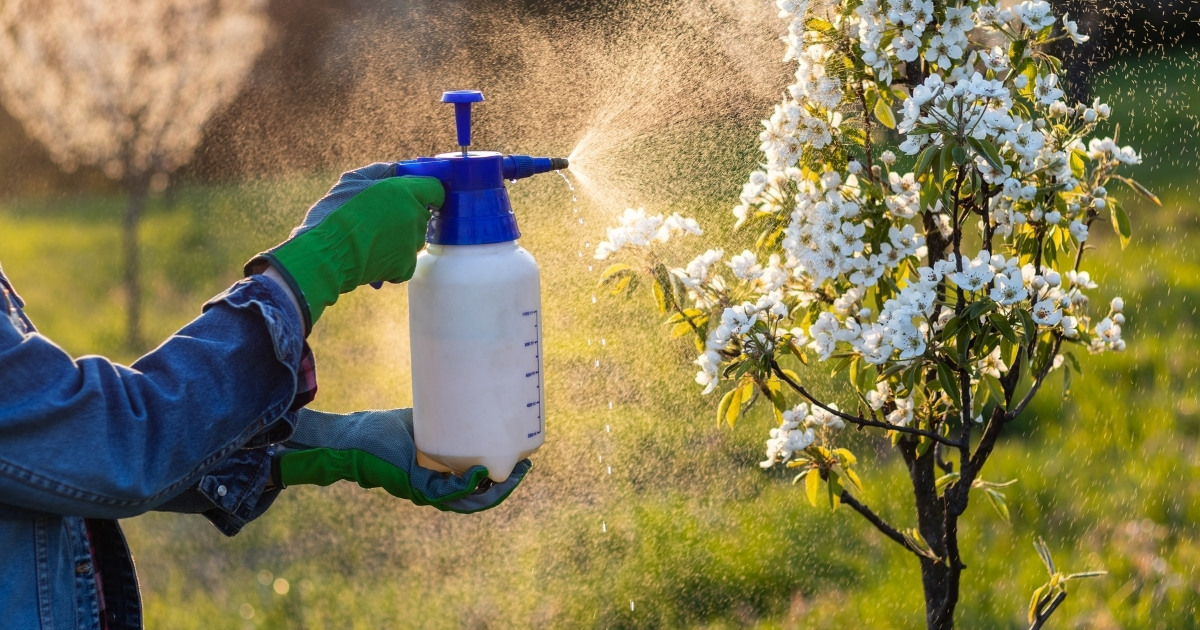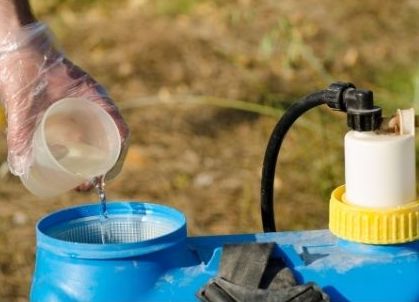
Category: Cooperative Extension

What you need to know before treating a pest
April 21, 2021 Written by David Owens, Extension Specialist - Agricultural Entomology
Ah! Spring is here! Plants are waking up from their long winter’s sleep. Unfortunately, this also means that pests are also waking up. Pests are simply anything that interferes with our desires and interests. In an IPM mindset, we seek to structure the landscape, the garden and our activity in such a way as to minimize the need for a pest rescue treatment with a pesticide. Pesticides are incredibly powerful, convenient tools to prevent pests or remediate pest populations, but only if they are used carefully and responsibly.
The first step in controlling a pest is accurate identification. Some diseases may be evident only after it is too late. Last year one of my peach trees was defoliated by Peach Leaf Curl. I could have sprayed fungicide all day long and not have any effect; the proper treatment time was late fall and winter. Your local extension agent is an invaluable resource. First, they may have seen the issue before ad know how to remedy it. Second, they have ready access to resources and specialists to assist as needed. Third, their assistance is a service provided by land grant universities (in Delaware, those are the University of Delaware and Delaware State University). It is part of our mission.
Now that you have a pest identification, the next step is to determine if it warrants treatment. This is where extension and research can assist again. Is a pest going to cause damage and can we present it? From an insect standpoint, many plants can withstand 10 to 30 percent defoliation without impacting yield (unless, of course, you’re growing lettuce, spinach, or cabbage where you need good-looking leaves). Once you realize this, surely some of the perceived need for pesticide application diminishes.
Next, select an appropriately labeled product. This can get very tricky. This is where extension fact sheets, recommendation guides (such as the Mid-Atlantic Commercial Vegetable Production Guide) and your county agent can provide additional guidance. Go into any big box hardware or garden store and you will see chemicals with the same or very similar names and long, hard-to-pronounce active ingredients in tiny font. That active ingredient name tells you a lot about the product. For instance, there are two insecticides called Sevin. One formulation contains zeta-cypermethrin and the other contains carbaryl.
Your local extension agent is an invaluable resource...assistance is a service provided by land grant universities.
These are two very different compounds. The active ingredient is what controls most of the product’s efficacy, safety and other characteristics. Some also clue you in as to the type of pesticide class. For example, many available insecticides for homeowners are pyrethroid insecticides – contact nerve poisons with active ingredients that end in “-thrin,” and all are very similar. Not all pests respond equally well. Just because zeta-cypermethrin “kills over 500 listed pests” doesn’t mean it will kill Colorado potato beetles that are defoliating your eggplant. Also, just because it is on a label doesn’t mean that it is a pest or not helpful at all. I recently saw Tachinid flies and Robber flies on a label. Both groups are beneficial – they eat pests. Even paper wasps can be beneficial. They remove tremendous numbers of caterpillars off of our vegetables. Do your homework first before rushing out to the store.
Once a product is selected, you need to take certain precautions to use it safely. Some pesticides are practically innocuous; others can be fatal if handled inappropriately or carelessly. If not used properly, they can cause unintended consequences. Every pesticide has a label. This label carries the weight of law – how a product may lawfully be used. These labels have certain critical pieces of information. Every pesticide has a First Aid, Environmental Hazard and a Directions for Use box. Agricultural products have additional language on personal protective equipment and re-entry intervals that might not necessarily be present on homeowner product labels. At a minimum, it is a good idea to wear disposable gloves, long sleeve shirt, pants (ideally rubber, waterproof boots) and safety glasses or goggles. Hands are incredibly easily contaminated. Wash your hands immediately after applying and cleaning equipment. Wear eye protection; it is amazing how often little droplets splash during the mixing and cleaning process. Not to mention if the wind shifts a little bit when spraying and pushes spray droplets back to you.

Before filling the sprayer, make sure you know how much product is going out in an area. This is calibration. This step is crucial for product efficacy and plant safety. Too little is not going to work well, but too much may cause other problems. Measure an area, fill your sprayer with water and time how long it takes to treat the measured area. Determine how much water was used or is used in the time period. For larger agriculturally used products, label rates are usually expressed in the amount of product per acre or amount per 1000 ft2. Homeowner product label rates are often expressed in amounts per gallon and you will need to look at the label for guidance on how much area that gallon should cover.
Some products are going to direct you to spray leaves till runoff. Now that you are set, make sure weather conditions are favorable. Impending rain is going to wash off the product before it dries. High wind conditions are going to promote drift – microdroplets that move far away from where you aimed the sprayer. Even the time of the year is important. Some herbicides are much more problematic when sprayed in late spring and summer when temperatures are warm because they volatilize and drift off-target, damaging nearby plants.
Once your application is complete, write down your notes. What was treated and targeted? How much product was used, and under what conditions? Over time, you will be able to anticipate pest problems. Working with your extension personnel can help build a plan to prevent the pest problem or reduce its likelihood.
Now, get out and enjoy the warming season. Look at your plants and marvel at the diversity of interactions between plants and invertebrates! And if any of those interactions may warrant adjusting, reach out to your county agent for guidance. Be sure to keep safety equipment on hand and always read the pesticide label.
And may 2021 treat your garden and your crops well.
